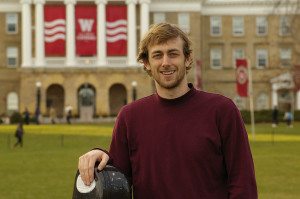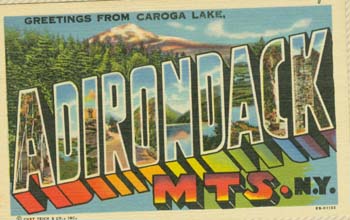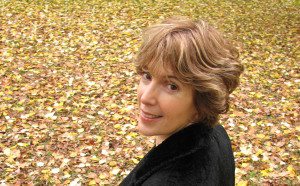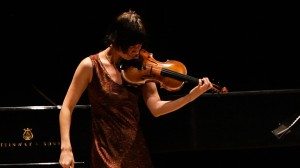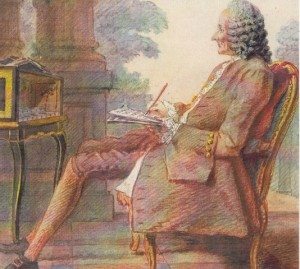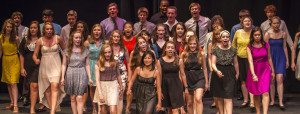During his graduate studies at the University of Wisconsin-Madison, alumnus J. Griffith Rollefson embarked on several international research trips while writing his dissertation, “European Hip Hop and the Politics of Postcoloniality.” Throughout Europe, he frequented hip hop shows, clubs, record shops, and open mic nights to observe and interview the people who consider this artform among the most politically conscious of all. Hip hop studies was then an emerging field in the United States, with institutions such as McNally Smith College in St. Paul, the University of Arizona, and Wellesley College in Massachusetts, offering coursework on the subject.

J. Griffith Rollefson. Image by Kathleen Karn.
After graduating in 2009 with his PhD in historical musicology, Rollefson began writing Flip the Script, a book based on his dissertation, examining how the children of immigrants from the former colonies of Europe imagine hip hop as a way to both understand and voice their relationship to society. Flip the Script (which Rollefson defines as “to upend a situation and/or rap a text”) was recently published by the University of Chicago Press and is now available for purchase.
Rollefson is currently an associate professor of popular music studies at the University College Cork, National University of Ireland. The Mead Witter School of Music is pleased to feature the following Q&A with Rollefson about his increasingly relevant work in hip hop culture, a wide-ranging field that encompasses the studies of race, class, gender, nationality, and politics.
Interview conducted by Kyle D. Johnson, a dissertator in piano performance.
You write that hip hop studies should “engage more directly and systematically with the tools of postcolonial theory.” What is postcolonial theory and why is it important to hip hop studies?
Postcolonial studies involves understanding how the past resonates in the present. How the past is never past. In short, if the “colonial period” started when Columbus “sailed the ocean blue” over 500 years ago and ended a little over 50 years ago, we need to imagine how that period might have had some lasting impact. And of course, we then need to think about what we should do if that impact is a negative one, as is overwhelmingly the case. The resonances are profound and very real. In the US, for instance, colonial processes have resulted in the world-changing beauty of the spirituals, jazz, rock and roll, and hip hop, but they have also resulted in the seemingly endless systemic marginalization of the very people who created those most American of musics – marginalization “from the plantation to the penitentiary,” as Wynton Marsalis put it.
Hip hop is unique both in its directness and in the depth of its contradictions. We simultaneously laud hip hop as the ultimate politically conscious music and decry it as the most vapid commercial expression of materialism, sexism, homophobia, and violence. Something’s gotta give with this contradiction – and I think I offer some good, and potentially illuminating answers in the book.
Postcolonial theory helps us assess and address historical impact by focusing on the continuities between slavery and commercial exploitation, from Georgia cotton, Jamaican sugar, and Honduran bananas to South African diamonds, Indian textiles, and Iraqi oil. Of course, these theories also help us account for cultural fields like music. The idea of “the forest and the school” is a good starting place to describe how processes of colonization remove “the forest” – that is, the natural resources (including, let’s remember, people) – and leaves “the school” – be it a missionary school or a grammar school, both of which are training grounds for assimilation into Euro-American ideologies. There’s a famous quip attributed to Jomo Kenyatta, the first president of independent Kenya, that goes: “When the missionaries arrived, the Africans had the land and the missionaries had the Bible. They taught how to pray with our eyes closed. When we opened them, they had the land and we had the Bible.”
How have current events in Europe, such as the refugee crisis, affected the state of modern-day hip hop in Europe?
Rappers will be the first to tell you that the “refugee crisis” is manufactured; they believe that Western Europe is slowly dying and needs immigration, but refuses to adapt for purely bigoted reasons. Sound familiar? I’ve talked to artists who’ve made this exact point – the Turkish German, Chefket and the Black Brit, Juice Aleem, for instance, who recognize foreign labor as a historical constant that gets conveniently forgotten in times of cultural navel gazing. Syria had been in crisis for years before it got widespread European attention as families began fleeing for their lives en masse. And notably, a quick look into the instability in Syria reveals deep and unresolved histories of colonization by France and the UK. This is why I say we need to listen to these voices. They really are on the front lines of history.

How is American hip hop related to European hip hop?
Through studying European hip hop we can see that “double consciousness”—the African-American feeling of “unreconciled” two-ness—is a particular American form of what is really a global postcolonial experience. This argument suggests that postcoloniality explains why hip hop was born in the South Bronx in the collaboration of African American, Puerto Rican, and other Caribbean communities. In my class, Planet Rap: Global Hip Hop and Postcolonial Perspectives, I look not only at African-American artists, but at Puerto Ricans, Filipino Americans, Chicanos, and Native Americans to understand how the United States is a postcolonial nation – the first postcolonial nation, really. And to underscore another point I make to my students – the “post” in postcolonial doesn’t mean that the colonial resonances are over. In most cases, they’re just coming to the fore. Germany, for instance, is just now beginning to own up to its colonial history. And France and the UK are doing their darnedest to explain away, forget, or Brexit their way out of their colonial complicities.
You’ve asserted that hip hop artists have a better perspective on the conditions of their society, over governments or geopolitical authorities. What makes hip hop unique in its ability to offer that “frontline” perspective?
In the consensus view of the artists I interviewed, it’s political “consciousness” that attracted them to hip hop in the first place. Something resonated with them – the music “spoke to them.” Again and again, I heard rappers describe the artform as a “vehicle,” “channel,” or “opportunity” to grab the microphone and finally be able to say something to their own societies – societies that usually don’t want to listen. Hip hop is unique both in its directness and in the depth of its contradictions. We simultaneously laud hip hop as the ultimate politically conscious music and decry it as the most vapid commercial expression of materialism, sexism, homophobia, and violence. Something’s gotta give with this contradiction – and I think I offer some good, and potentially illuminating answers in the book. These artists are indeed humans and have all the complexities we all have. They might play to stereotypes, but in doing so they force us to interrogate our own misconceptions.
If someone wanted to explore the current world of European hip hop, which artists would you recommend?
I’d recommend starting with some of the classics, like MC Solaar (France), Roots Manuva (UK), Advanced Chemistry (Germany), and Scary Éire (Ireland). My current playlist includes more recent artists like Stromae, Les Nubians, Sidi-O, and Oxmo Puccino (France/Belgium); Juice Aleem, Lowkey, and Lady Leshurr (UK), Amewu, Chefket, and Samy Deluxe (Germany), and Lethal Dialect and Rusangano Family (Ireland). FauxSounds.com has actually just invited me to annotate a “Flip the Script European Hip Hop” playlist for their website. Check that out for a nice sampling and some brief background details: http://www.fauxsounds.com/faux-sounds/2017/10/18/professor-j-griffith-rollefson-flip-the-script-european-hip-hop
Now, for some background on you. How did you go from dissertation to Flip the Script? Why did the University of Chicago take an interest in your work?
Well, if you consider that I wrote my first seminar papers on European hip hop for UW-Madison Professors Susan Cook and Pamela Potter in 2003-2004, then we could say it took well over a decade. Back then word was that Turkey would become an EU member any day. Needless to say, a bit has changed since I started the research. At that time, the EU was providing an inspiring model of what an international community of the future might look like, and now we’re on the slippery slope to ethno-nationalism on both sides of the Atlantic.
In 2006, after my coursework, I started a yearlong fieldwork project funded by the Berlin Program for German and European Studies. That trip was centered in Berlin, but included multi-month trips to Paris and London where I worked with hip hop communities: going to shows, clubs, record shops, open mic nights, community centers, observing and doing interviews in any place where hip hop community happened. In 2008, I returned there with funding from the German Academic Exchange Service, known as DAAD, and then embarked on shorter trips until I moved to the UK and Ireland with my family in 2013. In fact, although Flip the Script centers on Berlin, Paris, and London, the book concludes with a look at what I call the “postcolonial whiteness” of Ireland’s brilliant hip hop critiques about their colonial past and neocolonial present. What’s interesting in this case is that it gets us thinking about race and colonialism together. As you may know, racial difference was a centerpiece in the logic of British domination of Ireland.
Elizabeth Branch Dyson at the University of Chicago Press showed interest in the manuscript early on and then held my hand throughout, encouraging me to get the book exactly right over the last five years or so. I suppose the lesson there is patience. I’ve had the privilege of being able to be patient, and it has paid off.
Outside of your work on Flip the Script, give us an update on what you’ve been up to since earning your PhD.
I’ve become a dad, served as a church choir director and an adjunct professor in Southern California, won an ACLS New Faculty Fellowship (which was, essentially, the “Great Recession Stimulus Plan for Young Scholars”) which took me to UC Berkeley, held a lectureship at the University of Cambridge and, finally, landed a tenure-track job at University College Cork, National University of Ireland. I should also say that spending the last four years as a European resident really helped me finish the research and added a level of personal understanding of the fragile realities of displacement and immigration.
Where can people go to get more information on you, Flip the Script, and possibly future projects you’re involved with?
The book’s companion website – EuropeanHipHop.org – is quickly becoming a clearinghouse for all sorts of links, syllabi, podcasts, and news.







